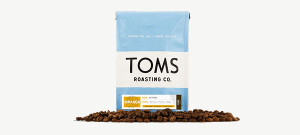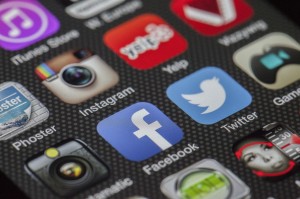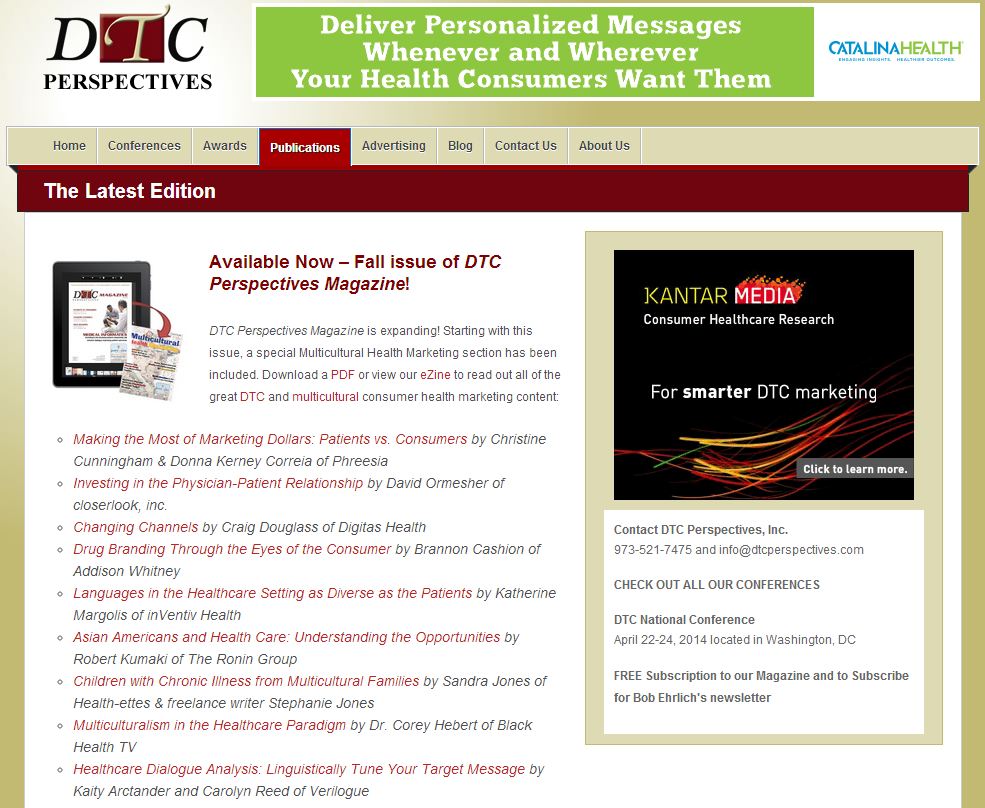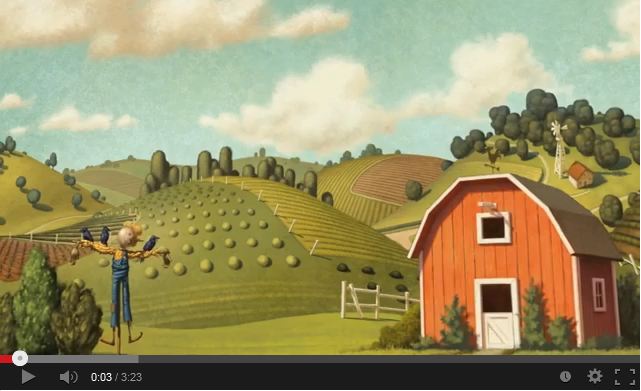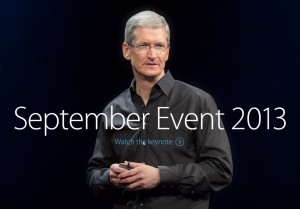And...we're BACK!
And...we're BACK!
Hey Branders! We’ve been on a bit of a facelift hiatus since the end of last year. In conjunction with the launch of our new website, we also did a reskin our brandsalsa blog.
Everything here is a bit more visually-oriented, and overall, a better reflection of Addison Whitney’s brand. Now, we’ll be back posting updates on a more regular basis, and we’ll also share videos, news and/or trends that catch our eye. So, if you see something that makes an impact on you, feel free to share it with us via [email protected].
Happy Branding!
TOMS Launches Marketplace, Roasting Co.; Continues To Build on Social Good Promise
TOMS Launches Marketplace, Roasting Co.; Continues To Build on Social Good Promise
10 million pairs of shoes to children in need.
150,000 people have had their sight restored.
And now?
One of TOMS’ latest ventures, Marketplace, brings 30 socially conscious brands together via a platform to help them succeed. Committed to give back to their communities, each brand is working to make a difference to use business to improve people’s lives. With over hundreds of items to choose from, TOMS offers its community the innovative opportunity to shop by cause or even the region they wish to help.
But that wasn’t enough… Earlier this month, the company launched TOMS Roasting Co. Remaining committed to its One for One® mantra and in partnership with Water for People, for every bag of coffee TOMS sells, a person in need will receive a week of clean water. Let that sink in for a second… An estimated 1.8 billion people are drinking unsafe water. When you buy a $12.99 bag of coffee, someone will get something we take for granted every.single.day.
It’s remarkable, really, to see a company able to thrive by making an impact on communities worldwide. Not only thrive, but build a brand for itself that other companies strive to emulate. With so much focus on shopping local and doing good, this is a branding trend I’m happy to follow, and personally, I can’t wait to see what TOMS comes up with next.
# # #
Source
“One for One,” TOMS.com, https://www.toms.com/our-movement/l
Logos: Making Your Brand Pop
Logos: Making Your Brand Pop
Guest Blogger: Ashley Wiederhold
Branding is a multi-faceted process that requires several components working in tandem to be successful. One of these elements is a logo.
Ultimately, a company’s logo is its brand’s visual representation. Your business can have several different forms of collateral that are visual in nature, but odds are the logo is going to be on all of them. For this reason, the design of an appropriate, engaging, and strategically developed logo is paramount to your brand’s identification. Kathy Savitt, chief marketing officer at Yahoo!, puts it best: “The logo is your calling card, identity, manifestation.”
Graphic designers are trained to create logos that meet the needs of businesses, but it’s critical that today’s business leaders understand why certain logo candidates are better than others. The design of a new logo hinges on numerous variables, including:
- The target audience
- The mission of the company
- The values that the company has adopted
- The attributes with which the company wants to be associated
- The manner in which the logo will be used
- The industry in which the company operates
Graphic designers gather these details before getting to work. Today’s top designers will take this information and translate it into a series of characteristics for the visual brand identity. A fantastic infographic that breaks down the various elements of a great logo, below , was designed by 123Print and has been making its way around the Internet. As the infographic explains, everything from the color to the font can make a difference in the values, attributes, etc. that your logo conveys.
- Color: The color of your company’s logo needs to be visually appealing, of course, but it also needs to set the tone of the brand message you are trying to convey. For example, if you are looking to create a bold, vibrant brand image, you may try to avoid using pastel colors in your logo.
- Font: The old phrase, “It’s not what you say, it’s how you say it,” is so true when it comes to your business’ logo. The right font will attract your target audience—and help you manage the expectations of potential new clients. For instance, a company that wants to instill a sense of dependability may want to stick with serif fonts.
A logo should, through its individual components, create a visual representation of your brand that pops. This is the first impression that many people will have of your company or product, so make it count!
Source
Entrepreneur article
Richard Branson Communicates with Consumers, Builds Character with Branding
Richard Branson Communicates with Consumers, Builds Character with Branding
Guest Blogger: Ashley Wiederhold
“Brands exist as a means of communicating what to expect from a product or service,” explains Richard Branson in an article he wrote for Entrepreneur. This definition may seem simple—too simple—at first glance, but it conveys an often overlooked idea that is central to the art of effective branding: branding is a form of communication.
Too frequently, businesses approach branding as an afterthought. Professionals who are busy building a company may assume that the colors and font used in the logo, or the names of its products and services, or even the manner in which they communicate internally, play a minute part in the successful development of a brand with staying power—and they couldn’t possibly be more mistaken.
As Branson points out, branding is a form of communication. When you brand your company, you are creating materials (a logo, a product name, a tagline, etc.) that convey the values of your business. You are targeting, with these materials, the consumers that you want to turn into clients. With the wrong brand message, you and your potential clients might as well try communicating in two different languages.
Branson explains that businesses often make the mistake of trying to create a perfectly polished image for their brand—and this can cause them to suffer from a lack of personality and, as a result, appeal. He explains: “When creating your first ads, designing a logo, and reaching out to potential customers for the first time, you may be tempted to create a brand that’s very corporate and remote. Too many companies want their brands to reflect some idealized, perfected image of themselves. As a consequence, their brands acquire no texture, no character, and no public trust.”
So, what do you do when you’re trying to create a brand that will speak to the right consumers (and in the right language)? Your brand should reflect both the values of your company and the values of your target audience. Only when you remember that it takes two to communicate can you create an effective brand that clearly conveys your company’s message.
Sources:
Image from Forbes
Entrepreneur article
Social Media: How Can It Build Your Brand?
Today's guest blogger is Ashley Wiederhold, Project Manager here at Addison Whitney!
Social media is just one of many double-edged swords in the marketing arsenal. On one hand, when done right, social media marketing is a highly effective way to appeal to a target audience. On the other, the wrong approach to social networking can be disastrous. The key to leveraging social media platforms to build your brand lies in one simple task: understand your brand.
This may seem obvious, but you would be amazed by how many companies are engaging in social media marketing campaigns that detract from the brand they’ve established. While using Facebook, Twitter, LinkedIn, and the like may seem easy, it’s actually quite a strategic activity for companies that do it right.
So, how do you go about understanding your brand? The key lies in doing a bit of soul-searching about what your brand stands for. If you’re a new company that has just gone through the name or logo development process, you should have a strong knowledge of your brand’s mission and values. If not, take the time to answer the following questions, which were inspired by an article published by the Huffington Post:
- What does your brand look like? This means surveying the graphics that your company has developed to represent it, such as the logo. Additionally, gather details about your brand’s color palette, font, etc. It’s a great idea to create a brand standards document where you can keep all of this information (and distribute internally to ensure brand continuity).
- What does your brand sound like? Believe it or not, your brand has a voice. The point of social media marketing is to amplify this voice by proclaiming it from social networking platforms. To successfully do this, though, requires consistency. The posts that are published on Facebook should be consistent in tone. Additionally, this tone should be carried across platforms, such as onto Twitter or Pinterest.
- Why is your brand online to begin with? The simple answer to this question is to increase awareness. You want to increase your revenue by attracting new customers, and the only way you can do that is through an increase in visibility. The Internet opens a very big door with this regard, but your brand will only make it through the door successfully if you understand the purpose behind your social media activity. Do you want to inform your target audience? Do you want to keep people entertained? Keep this goal in mind when creating social content.
Source:
Huffington Post article
Hot off the Press: Addison Whitney Feature in DTC Perspectives Magazine
Our global president, Brannon Cashion, wrote an article about pharma branding through the eyes of the consumer for DTC Perspectives Magazine’s Fall 2013 issue. Check it out: https://goo.gl/bsoh8g!
Brand Genius: Jack Dorsey
I was in a Bank of America a week ago and came across Fortune magazine’s 40 under 40 issue. I began flipping through the pages and stumbled across Jack Dorsey; I recognized the name, but only as the co-founder of Twitter. What I learned reading the article, and doing more research on Dorsey for this post, far surpassed my initial impression (he started Square, too?!?!).
So, similar to our “Brands We Love” posts, we’ve talked internally about focusing on key influencers and brand leaders who are making waves in our industry. Dorsey will be our first post profiling such an individual.
There is something innately fascinating about someone like Jack Dorsey – a college dropout who soaks up information like his life depends on it. Someone inherently curious, who has built a life for himself that revolves around invention, innovation and seeing the world as something to evolve, to make better. Learning about him, you find yourself a little envious, but then realize that he has harnessed what he excels at and shared it with the world. It’s remarkable.
A St. Louis native, Jack Dorsey had an affinity for studying maps and spending time in railway yards as a kid. He taught himself basic computer programming and by the time he was a teenager, he had developed a program that graphically simulated the movements of the vehicles on a police scanner.
He studied at the University of Missouri, but a job took him to New York where he enrolled and eventually dropped out of NYU. He bounced around – working at (and leaving or being fired from) two different start-ups and eventually ended up back in St. Louis feeling like a failure. But, his time home allowed him to study varied interests, from botanical illustration to massage therapy.
In 2005, San Francisco became the impetus for Dorsey’s creativity. Through a job at Odeo, a directory and search website for syndicated audio and video, Dorsey was able to partner with colleagues to brainstorm new computer programs. Odeo’s popular “hackathons” which allowed its programmers to work on anything they wanted, eventually gave way to the development of Twitter. A poster on the Y Combinator blog once commented that Twitter was “more of a discovery than an invention” and because of that reality, its precise origins are convoluted. That said, Dorsey was instrumental in its creation and success, along with a team of highly intelligent programmers and developers.
The fledgling Twitter needed to build buzz and awareness, so Dorsey and company used the South by Southwest festival to do just that. Twitter named six attendees who were enthusiastic tweets its “ambassadors,” and posted their messages on plasma screens in the lobby of the conference center. The stunt was insanely successful and paved the way for continued growth.
The beauty of Twitter is how much its basic interface lends itself to all sorts of purposes – uses unforeseen by Dorsey and its designers. And, every step of the way, Twitter has embraced its own evolutions, including retweeting, the @-reply and hastags.
“I believe fundamentally that the next Gloria Steinem, the next Ghandi, the next Martin Luther King – they’re out there and they’re actually using Twitter today. And our job is to insure that people find them.” -Jack Dorsey
Twitter’s beginnings were bumpy, and the management structure was innately flawed. Eventually, Dorsey left the company (he still retains the chairman title, but it’s somewhat ceremonial in nature) and began searching for a new problem to solve.
Genius struck when Jim McKelvey, a longtime friend of Dorsey’s, complained that he failed to sell a piece of glasswork to an overseas buyer because of credit card payment issues. Dorsey began to think of money as “commerce, which is conversation.” Together, they assembled a team; Dorsey focused on the software and McKelvey, the hardware. Soon, they had a prototype and were approaching investors…and Square was born.
Just four years after Square’s technology breakthrough (using the iPhone’s audio jack, rather than its patented dock connector to attach to phones), the company has been valued at $3.25 billion and IPO rumors are swirling. Dorsey has been able to shape Square into a company that he’s proud of, and one that is profiting off of his experience.
At 36, Jack Dorsey is strategically building his personal brand on a colorful Twitter and Square foundation. He’s thoughtful, deliberate and open-minded. He continues to act unconventionally – at a recent talk at Y Combinator’s annual startup school, Dorsey read from some of his favorite books and played music for the audience. And, in some ways, he’s a bit of an enigma – mentioning a possible run for mayor of New York and also enjoys riding the bus to work to be able to observe people’s interactions with technology and apps (via phones, tablets, etc.).
With so many accomplishments already in his repertoire, Dorsey still has immense potential ahead of him and it will be interesting to see is brand develop further with each new venture. Stay tuned, branding nerds!
# # #
Sources
“Jack Dorsey: The pride of St. Louis,” Fortune magazine, https://goo.gl/CGPVOS
“Jack Dorsey holds impromptu art and lifestyle symposium,” CNET.com, https://goo.gl/CUwWvI
“Two-Hit Wonder,” The New Yorker, https://goo.gl/5qB7qd
“20 Things About Jack Dorsey,” All Things D, https://goo.gl/fAUG8
“The Many Sides of Jack Dorsey,” WIRED, https://goo.gl/4vY6E
Welcome to the new addisonwhitney.com
After months of preparation, dedication and hard work, Addison Whitney is delighted to officially announce the launch our newly designed website, www.addisonwhitney.com.
The new website is clean, colorful and a stronger representation of our brand. Our goal is to provide our visitors with an extremely user friendly site that clearly communicates who we are and what we do. The site offers more functionality and easier navigation, while painting a better picture of our company’s past, present and future.
There’s a lot to see on the new site and we hope that everyone will check it out, but to learn a bit more about the direction and design of the site, check out the screenshots below.
While you’re on the site, I also encourage you to sign up for Forward, our quarterly newsletter that shares major branding news, insights and updates on what we have going on at Addison Whitney.
What’s new at addisonwhitney.com:

On the homepage, our rotating hero area directs you to the major sections of our site: Who We Are, What We Do and case studies.
You will also see a static call-to-action for a healthcare-specific section of the site. Our experience in both healthcare and non-healthcare industries is so extensive that it’simportant for us to highlight each separately with dedicated sections.

One of the most exciting additions to our new site is the Our Team page (located within the Who We Are navigation). This is a great opportunity to talk about our people and what makes Addison Whitney great. The passion and dedication that drives us every day is why clients love hiring us and why we love working here.
Under Who We Are, we also highlight our global locations and Helping Hands work: two things we love to show off.

Under What We Do, you will find our department pages. In this section, we have really simplified the navigation and user experience.
Each department page includes a link to our case studies and, when you click here, you’ll be taken to a pre-filtered case study page that corresponds to the page you came from (e.g., verbal or visual branding, brand strategy or research and analysis).

The case study page on the new addisonwhitney.com is the main showpiece and greatest improvement from the old site.
Now, we have two separate case study pages, one dedicated to our healthcare work and one for our non-healthcare work. Both have the same functionality and look.
When you click on Our Work, you will be greeted with large images rather than a list, and unlike before, where it took at the very least five clicks to find a case study, now you can find what you’re looking for in as little as two – a huge user experience improvement.
Both case study pages feature a robust filtering system that allows you to sort our work by service, industry, situation or region.
As far as the actual case studies go, they are more detailed and engaging, and boast more pictures.
There are a lot of great changes happening here at Addison Whitney, and the debut of our new website is just the beginning! Over the next few months, you’ll see a redesigned Japanese site, a reskin of our beloved brandsalsa and a few other great items that we’re not quite ready to share yet. But, we promise they’re exciting, so stay tuned! And in the meantime, please to check out the new addisonwhitney.com, and tell us what you think.
Chipotle: Cultivating a Better World
Back in June, I wrote about my undying love of Chipotle and its brand.
I wrote about the company’s original short film, released in 2011 and entitled, “Back to the Start.” The film, by film-maker Johnny Kelly, depicts the life of a farmer as he slowly turns his family farm into an industrial animal factory before seeing the errors of his ways and opting for a more sustainable future. Both the film and the soundtrack were commissioned by Chipotle to emphasize the importance of developing a sustainable food system. The video reached more than four million views on YouTube when it aired during the 2012 Grammy Awards (in its entirety, 2 minutes and 20 seconds). At present, the video has a whopping 7.8 million views.
Fast-forward two years and so many months later to “The Scarecrow.”
I came across this new short film when it launched last Thursday, Sept. 11 and was in absolute awe. From the hauntingly beautiful Fiona Apple singing a childhood favorite, “Pure Imagination,” to the amazingly profound storytelling, I was hooked. Only Chipotle could weave a story that seems so simple, but is, in turn, a profound critique of our food industry. See for yourself.
Oh, and did I mention it’s based around marketing for a game? In collaboration with Academy Award-winning Moonbot Studios, “The Scarecrow” is an app-based, arcade-style adventure game that depicts a scarecrow’s journey to bring wholesome food back to the people by providing an alternative to the processed food that dominates his world (click here for a behind-the-scenes look). Here’s the official game description off its website.
The Scarecrow needs your help to foil the evil plans of Crow Foods and break the crows’ monopoly on food production and supply in the city of Plenty. Tilt your device to navigate through each level, outsmart the Crowbots, unlock extras, and restore hope for animals, farms, and the environment, while providing the citizens of Plenty a healthy and delicious alternative.
The buzz from Chipotle’s latest marketing coup is substantial. A simple Google News search for Chipotle and scarecrow returned more than 6,000 results. Every element has been meticulously thought through:
- Download Fiona Apple's cover of “Pure Imagination” from iTunes and proceeds ($.60 per download) go to the Chipotle Cultivate Foundation, which provides funding to support sustainable agriculture, family farming, and culinary education.
- Earn at least three stars on every level of the game and score a BOGO card for a Chipotle burrito, bowl, salad or order of tacos (while supplies last, sure, but who doesn’t love free food?).
And, all of the copy surrounding this campaign is clear and concise – case in point:
“The Scarecrow” is another chapter in our commitment to Food With Integrity, and represents what we aspire to accomplish through this mission. Our goal for “The Scarecrow” is to bring awareness of important issues to a broader audience, and we hope it entertains you as much as it makes you think.
Smart. Thought-provoking. Inspirational.
To leverage even more success, I’m curious to see if it runs during the Emmy Awards broadcast this weekend. It may have already netted more than 4.8 million YouTube views, but a primetime audience could mean a repeat of its initial “Back to the Start” success (and then some, especially considering the buzz is so big already). I’ll definitely keep an eye out.
So, how does this kind of campaign define Chipotle’s brand and tell its story? From a bigger branding picture, why does it matter? It’s rare for a large company to be so self-aware and smart that it builds a brand where it doesn’t have to blatantly use its own name in marketing and advertising. Chipotle relies on the wholesomeness of its food and emphasizes the importance of its cause to tell its overall brand story. From a bigger branding perspective, Chipotle’s success means more and more companies may need to figure out how to use similar tactics to build their own brands – and, for new companies, it’s a great example of the importance of working hard to do things right.
# # #
Sources
“The Scarecrow,” ScarecrowGame.com, https://goo.gl/dTwNGV.
“The Scarecrow – Chipotle Mexican Grill.” MoonbotStudios.com, https://goo.gl/cOUhkK.
An Apple a Day...
So, it's no secret that we're fans of Apple at Addison Whitney, and today's keynote was no exception. There is something so intoxicating about the buzz surrounding these events, and we were very excited to see the latest news unfold.
Today's keynote had several announcements, but here are the highlights.
First up, two new iPhones (to completely replace the iPhone 5).
But, as impressive as the new products seem to be, I think we were most excited to learn when Apple's gorgeous new operating system, iOS 7 would be released to the public. Drum roll, please... next Wednesday, September 18!
In case you missed the keynote, feel free to watch it below.
What do you think about the new phones? And, their naming extensions (5C and 5S)? What do you think this means for Apple's brand moving forward/what impact do you think it has? We'd love to hear your thoughts!



